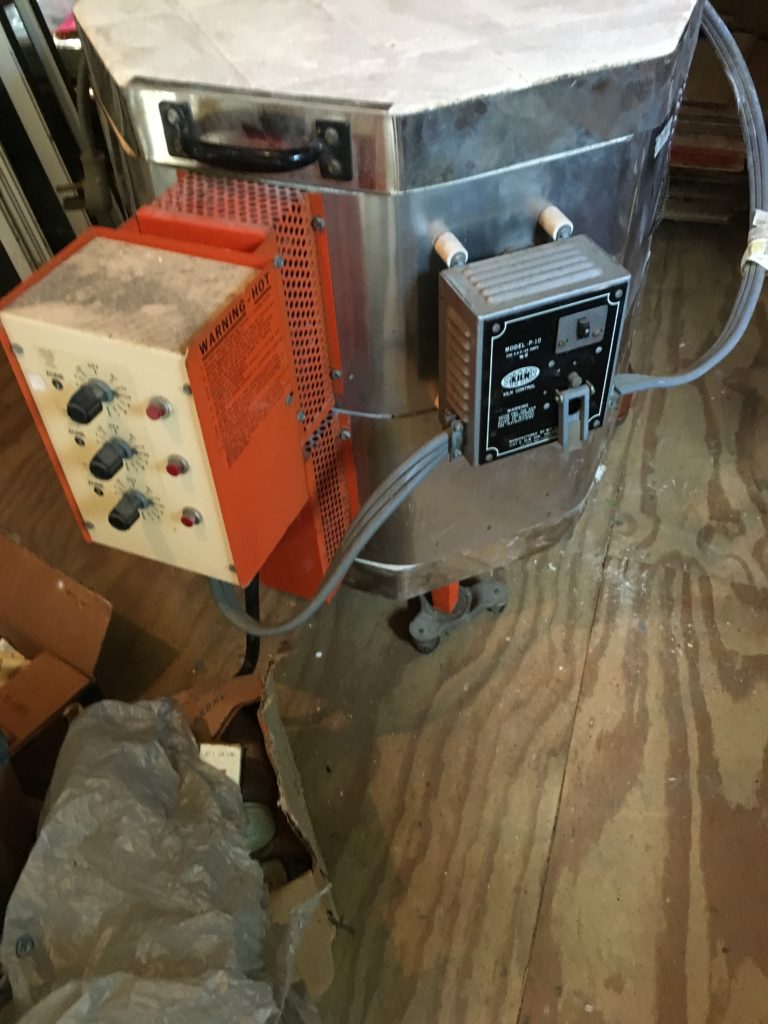Podcast: Play in new window | Download
Will This Kiln Fire…?
There are kilns for just about everything you want to heat. There are kilns for glass, clay, knives, metal clay, copper enameling, lampworking, glass blowing, salt firing, reduction firings, and everything in between. Whether you new to fired arts or your looking to broaden the scope of your work you may want to purchase a kiln that does more that on type of firing. Why box yourself in? Shouldn’t you try to get the most bang for you buck? In this episode we’re going to answer these questions and give you the facts you need to make the right choice.
Power
You can tell a lot about a kiln just by looking at the power cord. Most 120volt kilns are limited to the temperatures it can reach. That means that if your fired art requires you to get to temperatures at or above 2000F that kiln is probably not for you. Also, if the speed at which you need to get to 1600-1700F is important that a 120 volt kiln might not be for you. Here is a bit of a caveat. A 120volt 17amp kiln can boost the performance of a kiln. The important thing here is to know what you need and not compromise on performance.
Top, Front, Both, Clamshell
Moving in and around your kiln can really make a difference in the type of kiln you use or how many different kilns you may need. We love pushing the limits or trying alternative firings and that has led us to modify our surrounding to accommodate the type of kiln we own. But, we have also enjoyed the experience of using the right kiln for a specific fired art. We have done metal clay, and copper enamel in kilns that were designed for that purpose. We have done raku in kilns that weren’t. The questions here are how often you will use your kiln for alternative uses and what kind of ware and tare will this have on the kiln.
Keep It Cool
Here is something we have overlooked a time or two and resulted in some very difficult situations. While glass devitrification is not that common you can certainly create an environment where it’s more likely to happen. I once facilitated a workshop with artist and business owner Alan Toy where each student would go home with a 21” platter. This was not being done because the logistics were too big a hurdle for the average studio. Imagine having 10 or more students creating these large platters and getting them all fired in a three day workshop. My response was, “challenge accepted”. We devised a firing schedule using some big top loading ceramic kiln that could have 5-7 shelves each. Getting to temperature was not the issue it was cooling the kiln down that became our nemesis. Having the kilns loaded full with all of the shelves and post necessary to support everyones work kept these kiln at just the right temperature long enough for devit to start. In this case the fix was to spray each piece with a coating of (Spray A) a devit spray. Did it work? Yes, but it did require some babysitting and added expense.
There are also many other cooling situations. You may be using a kiln that has the ability to hold heat for days and yet you need to get your work in an out much faster. It’s great that you have 5-inch-thick walls but do you need that and what headaches might it cause.
Hybrid Kilns
Ceram-a-glass kilns and other hybrid kilns that are designed to do more that one type of firing can be a great choice but a word of caution, usually your sacrificing one type of firing over another. For example. If you by a little brick top loading kiln that has a side flip door for beaders you are probably getting more of a brick top loader and less of a bead making kiln.
There are always lots of choices and sometime too many is just too many. If you are looking for a kiln that can get you into a few fired arts or merge a few fired arts then try the strawberry, vanilla, chocolate approach. If you can get just two of your favorite flavors, then consider it a big win and start firing with confidence.



